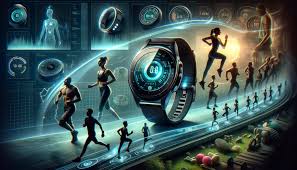Artificial Intelligence (AI) is no longer a futuristic concept confined to science fiction; it has become a driving force behind significant technological advancements. In 2024, AI-powered computers are revolutionizing how we interact with technology, enhancing personal computing experiences, and transforming PC performance. This article delves into the impact of AI on computer technology, exploring how these innovations are reshaping the industry and improving user experiences.
1. AI-Driven Performance Optimization
One of the most notable impacts of AI on personal computers is the enhancement of performance optimization. Traditional PCs rely on static algorithms and user inputs to manage system resources. AI-powered computers, however, employ dynamic, adaptive algorithms to optimize performance in real-time.
- Predictive Resource Management: AI algorithms analyze usage patterns and system requirements to predict and allocate resources more efficiently. This means that your computer can anticipate which applications will need more processing power and adjust its resources accordingly, leading to smoother multitasking and faster application launches.
- Intelligent Cooling Systems: Overheating is a common issue that can affect computer performance. AI-driven cooling systems use machine learning to monitor temperature variations and adjust cooling mechanisms proactively, ensuring optimal performance and extending the lifespan of hardware components.
2. Enhanced Security Features
AI is playing a crucial role in bolstering the security of personal computers. With cyber threats becoming increasingly sophisticated, traditional security measures are often inadequate. AI-powered computers incorporate advanced security features to address these challenges:
- Behavioral Analysis: AI systems use machine learning to analyze user behavior and detect anomalies that may indicate potential security threats. By recognizing patterns and deviations from normal behavior, these systems can identify and neutralize threats more effectively than traditional security software.
- Real-Time Threat Detection: AI algorithms can process vast amounts of data at high speeds, allowing for real-time threat detection and response. This proactive approach helps in identifying malware, phishing attempts, and other cyber threats before they can cause significant harm.
3. Improved User Experience with Personalization
AI enhances the user experience by offering personalized interactions and adjustments based on individual preferences and behaviors. This level of personalization can significantly improve efficiency and satisfaction:
- Smart Assistants: AI-powered virtual assistants, such as Microsoft’s Cortana or Apple’s Siri, have evolved to provide more intuitive and context-aware assistance. They can understand natural language, anticipate user needs, and perform tasks such as scheduling, reminders, and information retrieval with greater accuracy.
- Adaptive User Interfaces: AI algorithms can analyze how users interact with their PCs and adapt the user interface to fit their preferences. For instance, AI can optimize layout settings, suggest frequently used applications, and streamline navigation based on usage patterns.
4. Advancements in Gaming and Creative Applications
AI is also making significant strides in enhancing gaming and creative applications. These advancements not only improve performance but also open new possibilities for users:
- Enhanced Graphics and Rendering: AI-driven algorithms are used to enhance graphics and rendering in games, providing more realistic visuals and smoother gameplay. Techniques such as AI-assisted upscaling and real-time ray tracing deliver immersive experiences that were previously unattainable with traditional graphics processing.
- Creative Tools: For creative professionals, AI-powered tools are revolutionizing fields such as photo editing, video production, and music composition. AI can assist in tasks like automatic image enhancement, video editing suggestions, and even generating music based on user inputs.
5. The Future of AI in Personal Computing
As AI technology continues to evolve, its integration into personal computers will only deepen. Future developments are likely to bring even more sophisticated features and enhancements:
- Quantum Computing Integration: The potential integration of AI with quantum computing could lead to unprecedented levels of performance and problem-solving capabilities. Quantum computers, combined with AI, could revolutionize data processing and computational tasks.
- AI-Enhanced Hardware: Future PC hardware will likely include AI capabilities embedded directly into processors and other components. This integration will enhance real-time processing and decision-making, further improving overall performance and efficiency.
Conclusion
The rise of AI-powered computers marks a significant leap forward in personal computing technology. From optimizing performance and enhancing security to providing personalized experiences and advancing gaming and creative applications, AI is transforming how we interact with our PCs. As technology continues to advance, the integration of AI into personal computers promises to deliver even more innovative solutions, making computing faster, smarter, and more efficient. Embracing these advancements will not only enhance your computing experience but also keep you at the forefront of technological progress.

